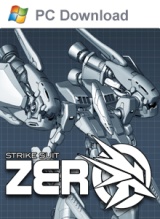
When I was a kid, I rented the original Rogue Squadron on the N64 from the now defunct Blockbuster near my house. Back then, renting a game for a few days was pretty cheap, and I did it all of the time. But Rogue Squadron was different; I played the game obsessively, every day. My friends did, too, and we soon realized that a week wasn’t enough time to conquer everything the game had to offer.
When my rental ended, I went back and re-rented the same game so I’d still have my save file. I did this the next week. And the next. And the one following that. And the one after that. Finally, the store just gave the game to me, instruction manual and all.
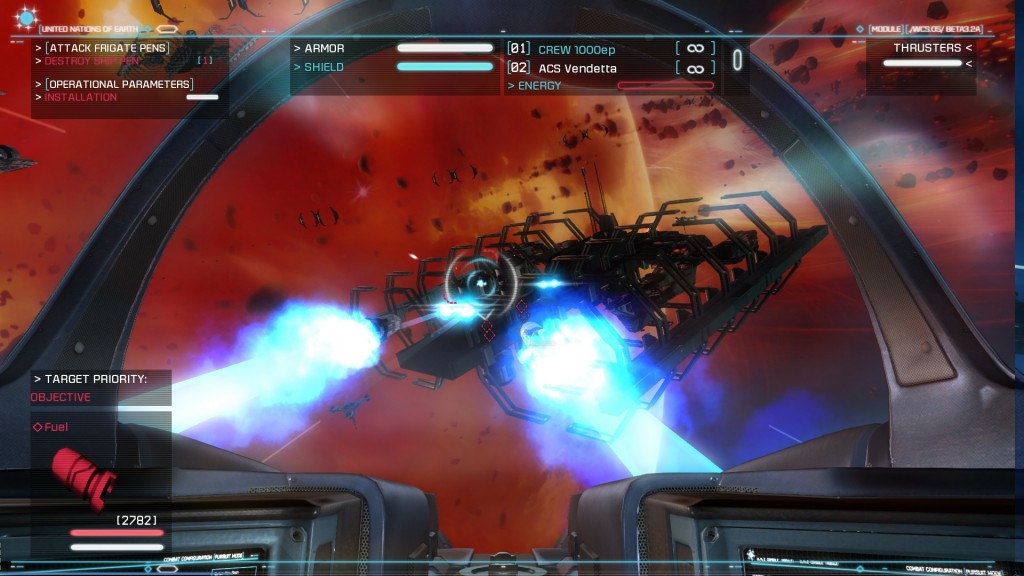
"The story is simple, but engaging: you take control of Adams, a voiceless pilot suffering from amnesia, at the tail end of a civil war between Earth and its colonies. Earth is losing, and is in danger of being wiped out by the more powerful Colonial fleet."
That game started my love of space combat games, and I’ve been playing them ever since, even as the genre has continued to see a drop in the number of games being produced year after year, and the sales of games in the genre decline. And yet, there are still the dedicated few, like myself, who yearn for more of these kinds of games, and quite a few companies who continue to make them, like Born Ready, the creators of Strike Suit Zero.
Like most games in a niche genre today, Strike Suit Zero began life as a Kickstarter project, and remains one of the few fully-funded Kickstarter games to see release. Now, more than a year after the game’s initial release, Born Ready has returned to the fray with Strike Suit Zero: Director’s Cut, an enhanced version of the game for PS4 and Xbox One.
The story is simple, but engaging: you take control of Adams, a voiceless pilot suffering from amnesia, at the tail end of a civil war between Earth and its colonies. Earth is losing, and is in danger of being wiped out by the more powerful Colonial fleet. There’s a lot of backstory involved, a much of it is delivered through dialogue and the occasional cutscene.
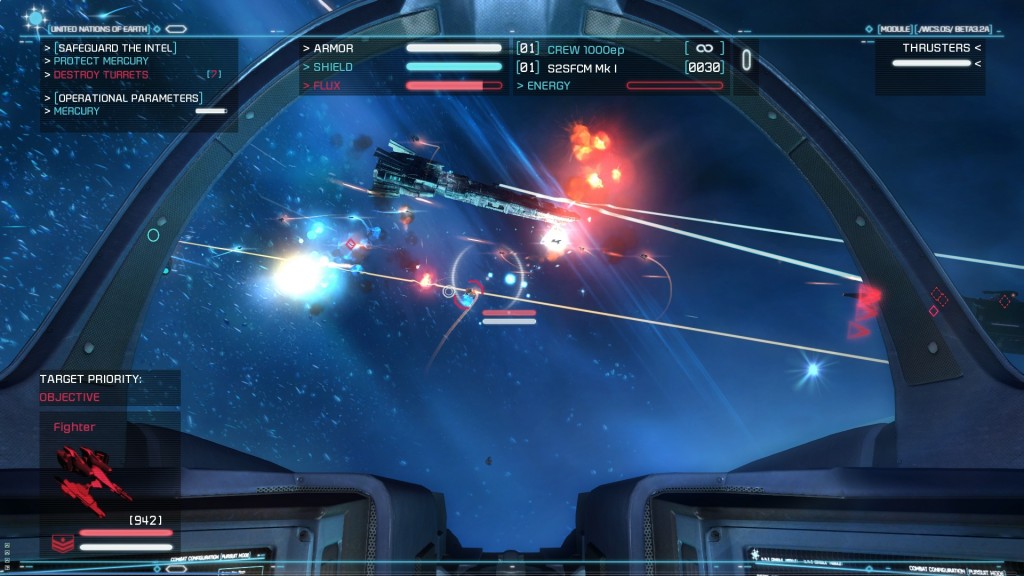
"You’ll start with a basic fighter, but soon you’ll gain access to the titular Strike Suit, a ship that can transform into a space mech if you have the necessary amount of flux, an energy source gained by destroying enemy fighters and capital ships."
It’s a pretty intriguing tale. You don’t know everything at the start, and much of the important information is intentionally left unexplained, which raises quite a few questions about the alien signal that led humanity to the stars and started the war, and about your companions, including Control, a humanoid AI with a mysterious purpose.
The game behind the story is a largely standard space shooter. Before each mission, you’ll choose from one of the several available ships, customize your weapons, and then head out. The controls are more or less what you’ve come to expect from the genre on a console: the sticks control your pitch, yaw, and roll, while the face and shoulder buttons manage combat actions, movement speed, and evasive maneuvers.
You’ll start with a basic fighter, but soon you’ll gain access to the titular Strike Suit, a ship that can transform into a space mech if you have the necessary amount of flux, an energy source gained by destroying enemy fighters and capital ships. You’ll lose pretty much all of your speed and maneuverability in this form, but gain access to some immensely powerful cannons and missile systems that are capable of destroying both capital ships and entire enemy squadrons.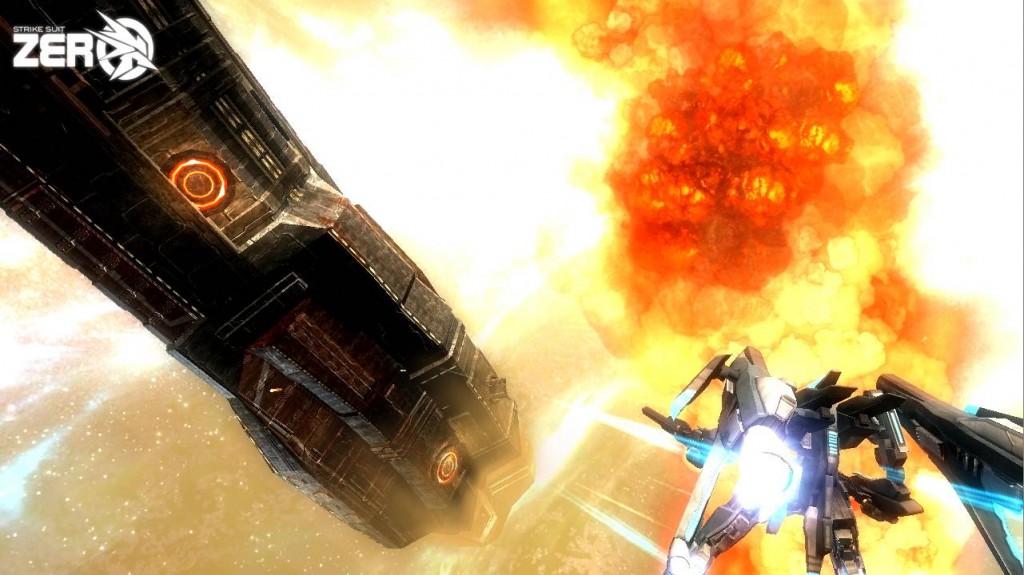
"The relative lack of variety on display here is compounded by the fact that the missions are incredibly long, and you’ll find yourself slogging through hundreds of enemies before a cutscene rolls and you’re transported off to the next mission to do it all over again."
It’s a cool system, and you’ll need it, as Strike Suit Zero throws wave after wave of enemies at you at any given time. Mission objectives don’t vary much between the eighteen missions that comprise both the core campaign and the optional Heroes of the Fleet missions. You’ll either be escorting other ships, destroying enemy fighters, assaulting enemy capital ships (yes, with a fighter), or attacking fixed positions.
The relative lack of variety on display here is compounded by the fact that the missions are incredibly long, and you’ll find yourself slogging through hundreds of enemies before a cutscene rolls and you’re transported off to the next mission to do it all over again. There are upgrades that can be acquired by completing optional objectives, and they do spice things up, but they do little to improve on the actual mission design, or the poor pacing.
All of this can get rather monotonous, despite the fact that the core gameplay is enjoyable, especially because some missions are extremely difficult. Your allies are only occasionally useful, and the game will often expect you to do rather ridiculous things, like destroy a number of enemy capital ships or hold off one hundred enemy fighters, all by yourself. The length of the missions means that checkpoints can be pretty infrequent, which can make some of the more difficult sections exceptionally frustrating.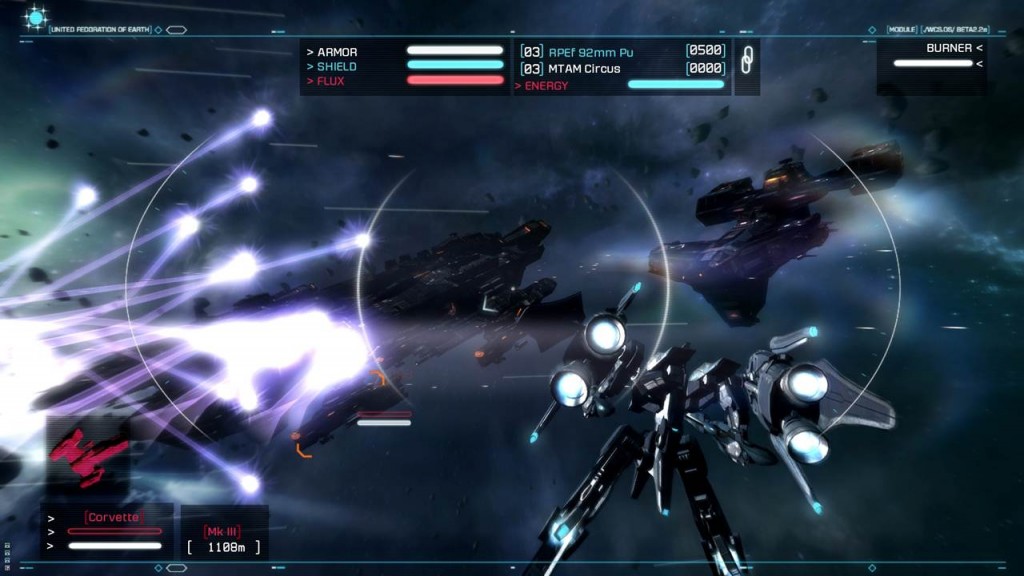
"The best aspect of the game is its music. It’s usually in the background, distant, like it’s coming across a great distance, and balances a futuristic techno sound with a more Eastern influence and soft, exotic vocals. "
There’s nothing like spending ten minutes zipping around defending two frigates from enemy missiles, only to have a third explode, and force you to redo the entire section all over again. Things are even worse when the game requires you to destroy three or four capital ships in a row, while at the same time defending your own capital ships who, unlike their Colonial equivalents, are largely incapable of doing anything themselves.
The easiest way around this is to abuse the Strike Suit’s mech mode and its absurdly powerful missile systems, which are often capable of annihilating all but the largest capital ships with a single volley. Unfortunately, this means that most of the missions, which already suffer from a lack of variety in terms of objectives, all play the same way. You’ll destroy a few fighters or turrets to build up your flux, transform into mech mode, use the mech’s cannons and missiles to destroy the bigger ships, and then transform back into a fighter to build up more flux. In a game with so many good ideas, and fantastic core combat, this type of design feels like wasted potential.
Still, the game looks good. The ships that you can choose from are pretty bland, but everything else, from the design of the various capital ships, enemy fighters, and installations to the pre-rendered backgrounds and the weapon effects are very impressive, especially when you consider how much stuff is on screen at any given time. Everything looks very clean and futuristic, and that goes a long way to selling the game’s story. The game runs very smoothly, too, and barring one incredibly random crash, I never experienced any technical problems. Thankfully, I had just reached a checkpoint.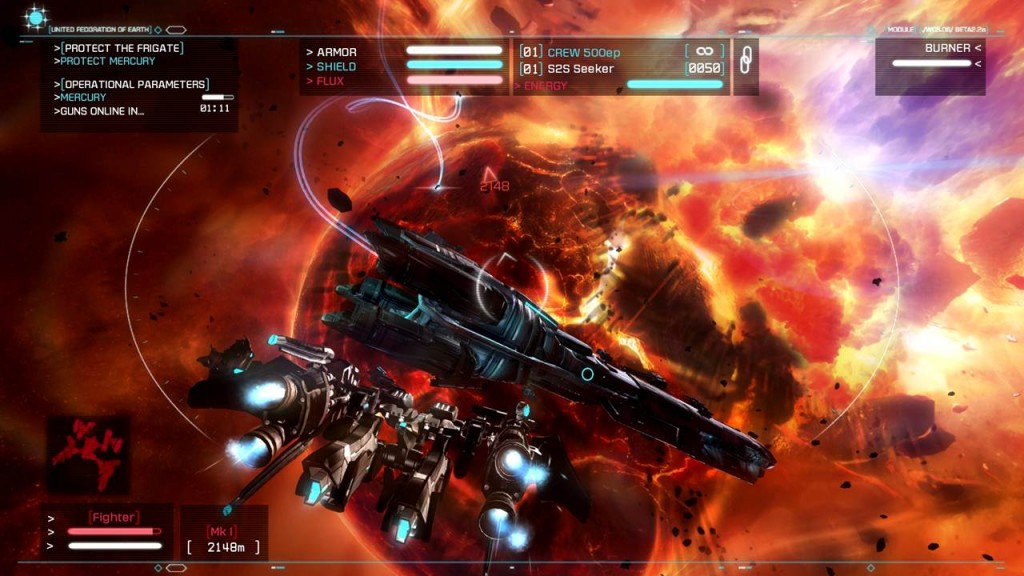
" It has a lot of things going for it – a cool story, good combat, pretty visuals, and an excellent soundtrack – but it’s let down by poor mission design and a frustrating checkpoint system. "
The best aspect of the game is its music. It’s usually in the background, faint, like it’s coming across a great distance, and balances a futuristic techno sound with a more Eastern influence and soft, exotic vocals. It’s really a great pleasure to listen to, and fits the game well. It’s the kind of music I could see myself listening to outside of the game, which is a rare feat for a video game soundtrack. The sound effects are equally good, and the voice acting is decent, though not impressive.
Unfortunately, that’s also a good summary for Strike Suit Zero: Director’s Cut. It has a lot of things going for it – a cool story, good combat, pretty visuals, and an excellent soundtrack – but it’s let down by poor mission design and a frustrating checkpoint system. It feels like the developers designed the Strike Suit first, and then built the battle situations around its ridiculous firepower, as though the only way they knew to compensate was by throwing wave after wave of enemies at you, or by having you face off against a number of drastically superior capital ships.
The game has a lot of good ideas, and there are genuinely a lot of things to like here, but one can’t help wonder how much better things would have been if the Strike Suit’s ability to transform and the excesses that added to the game’s missions didn’t exist. As it is, Strike Suit Zero is a space combat simulator with a lot of good ideas, and a more than a few flaws. It has a lot of potential, but it’s not the return to glory that the genre deserves. We can only hope that Born Ready learns from its successes and failures, and like the genre the developer so clearly loves, keeps going.
This game was reviewed on the PlayStation 4.
Excellent soundtrack. Intriguing story. Strong visual design. Space combat feels great.
Lack of mission variety. Poor pacing. The checkpoint system makes some missions extremely frustrating. The Strike Suit’s ability to transform hinders the game’s design more than it helps it.










